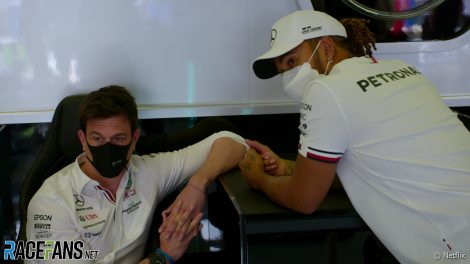Formula 1 expects its popular Netflix series Drive to Survive to continue beyond its current deal to cover the 2022 and 2023 seasons, and is welcoming the competition of similar series from other motorsport championships.
Drive to Survive has delivered an unparalleled behind-the-scenes look at the whole F1 paddock, a privilege previously only available to media, since the 2018 season. It has become a streaming phenomenon and vehicle for bringing new fans to F1.
Ian Holmes, F1’s director of media rights and content creation, spoke at the recent BlackBook Motorsport forum in London about Drive to Survive’s creation, its strategy and also its future beyond its current contract for two more series: a fifth, which is filming the current championship, and a sixth that will follow the 2023 F1 season and appear the year after.
“I think if we’re happy with it, if people want to consume it and watch it, and Netflix is happy with it, then I think we will continue [beyond series six],” Holmes said.
“What we saw, certainly in the last series, maybe the last two series, the team principals seem to take a more central role. But effectively we’re dealing with 30 people. And this is where I think we have an advantage over perhaps some football leagues [with shows]. Pretty much every sport is looking at their own sub-version, shall we say.
“But we have an advantage. We have 30 people, and that’s it. So you can actually go in quite deep with them, and cover the whole grid. So I think our sport lends itself to that.
“Plus the fact that for years and years and years there was little or no coverage of the behind the scenes.”
Advert | Become a RaceFans supporter and
Holmes said McLaren’s Grand Prix Driver series on Netflix’s streaming rival Amazon Prime instigated the idea to create Drive to Survive at a time when watching F1 almost exclusively meant watching races live on television. The championship’s new owner Liberty Media thought there could be more success in a production of its own design rather than delivering “an arm’s-length licence”, as previous F1 owner Bernie Ecclestone preferred, that administered capped filming and footage rights to shows focusing on individual drivers or teams.
“Off the back of Liberty wanting to take a slightly different approach to things, and an approach that was more inclusive, we thought wouldn’t it be better to actually adopt a narrative that…
Click Here to Read the Full Original Article at RaceFans…

